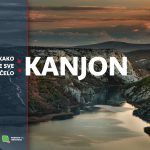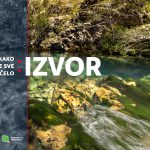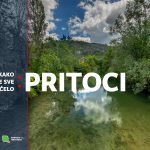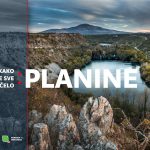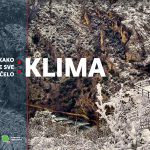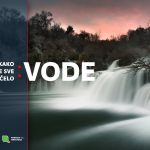Plateau
The geological formation of the Krka River region began with the sedimentation of limestone and continued with the formation of the plateau.
The plateau of the Krka River was formed at the end of the Pliocene and beginning of the Pleistocene, while its canyon was cut into relief in the late Ice Age. What man counts in millions of years, and divides into eons and epochs, is only a moment for the Earth. In geomorphological terms, three sections of the Krka River basin can be distinguished: the mountainous area in the northeast, where the Krka tributary valleys are deeply cut, the plain in the central part with a pronounced hydrographic network with numerous springs, and the North Dalmatian plateau.
Like the entire relief of the Krka River, its plateau forms a special karst shape. Above and below it is hard limestone. Its characteristic is that it is equally balanced regardless of changes in the composition of the rocks, and that it gradually rises towards the mountainous part. If we try to imagine the area of the Krka River at the turn of the Pliocene to the Pleistocene, when the plateau was formed, and later in the late Pleistocene, when its canyon was formed, it is necessary to keep in mind the great changes in climate and the relationship between land and sea. From the geoclimatic conditions of that time, some scientists predict the future of the Earth and its inhabitants.
To illustrate the period, in the Strmica clay pit in a small village north of Knin through which the Krka River tributary of Butišnica flows, in the 1970s the bones were excavated of a southern elephant that did not have fur that had lived during the Lower-Middle Pleistocene, some 700,000 – 2.6 million years ago, when the climate was much warmer than it is today. Bones were also gathered of an Upper Pliocene – Lower Pleistocene ancestral elephant and a Lower Pleistocene warm climate rhinoceros. One canine tooth was found belonging to a Panthera toscana, a beast similar to today’s leopard, along with one canine of a Lower Pleistocene bear (Ursus etruscus). The finds were described by Mirko Malez, a Croatian geologist, speleologist, and paleontologist, known as the pioneer of Croatian speleo-archaeology, and were interpreted for us by Drazen Japundžić, Head of the Geological-Paleontological Department of the Croatian Museum of Natural History. Part of the collected material is stored in the Department of Quaternary Geology and Paleontology at the Croatian Academy of Sciences and Arts.
Several theories exist about the formation of the plateau. The fluvial theory assumes the existence of a large, wide, and slow river in the geological past, when the climate was wetter and water more abundant, which eroded the limestone rocks of the initial relief. The slope of the terrain from the hinterland to the sea would be in favor of this. According to another theory, called abrasion, the plateau was formed by action of the sea, which gradually receded. There is also a theory that connects the previous two and interprets the formation of the plateau to simultaneous action of the sea and continental fluids (fluvial-abrasion theory). The corrosive theory explains the plateau formation in the area around the Krka through the complex interaction of erosion, leaching, and corrosion of the limestone in the warm and humid paleo-climatic conditions that prevailed 3 million years ago. Scientists and researchers also cite a tectonic theory, according to which the plateau was formed by varied local uplifting and twisting of the Earth’s crust, and along the breaking faults the plains and river valley (canyon) were formed.
As a result of intense Late Pleistocene glaciation, the canyon of the Krka River was cut into the plateau along tectonic and lithological predisposed directions.



